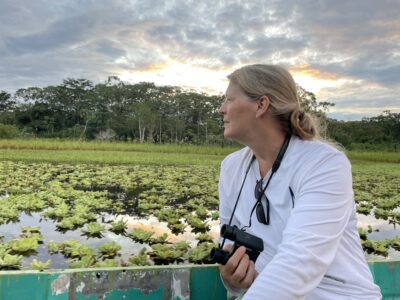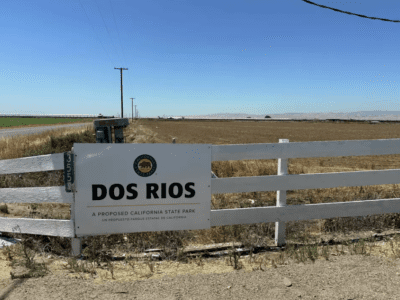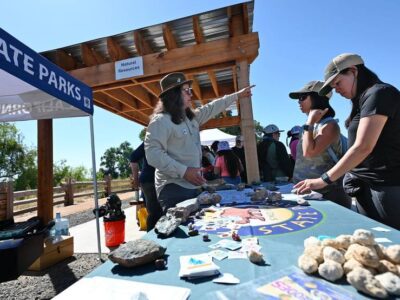- Southern California’s Salton Sea is one of California’s most dire environmental catastrophes. Restoration along the Alamo River, which terminates in the Salton Sea, provides a glimmer of hope for the region.
- River Partners will restore approximately 1,500 acres of native habitat for struggling wildlife to help revive the area that was once a birder’s paradise and vacationer’s destination.
- Our work in the area helped launch Imperial County’s first native plant nursery. Restoration, when done in partnership with local communities, generates benefits for ecosystems, communities, and economies.
At the Imperial Wildlife Area along the Alamo River near California’s border with Mexico, baking wind whips up soil that resembles powdered ash. Dense stands of invasive tamarisk infest the riverbanks, breaking up the laser-straight rows of adjacent farm fields that put vegetables on our dinner tables.
Nearby, the Salton Sea, once a thriving mecca for migratory birds and fish, is slowly evaporating under the baking desert sun. In recent decades, increasing salinity from the shrinking sea has caused some of the largest fish kills and bird die-offs on U.S. history. As the sea retreats, toxic dust gets whipped up in desert wind and exposes Riverside and Imperial County residents to severe health hazards.
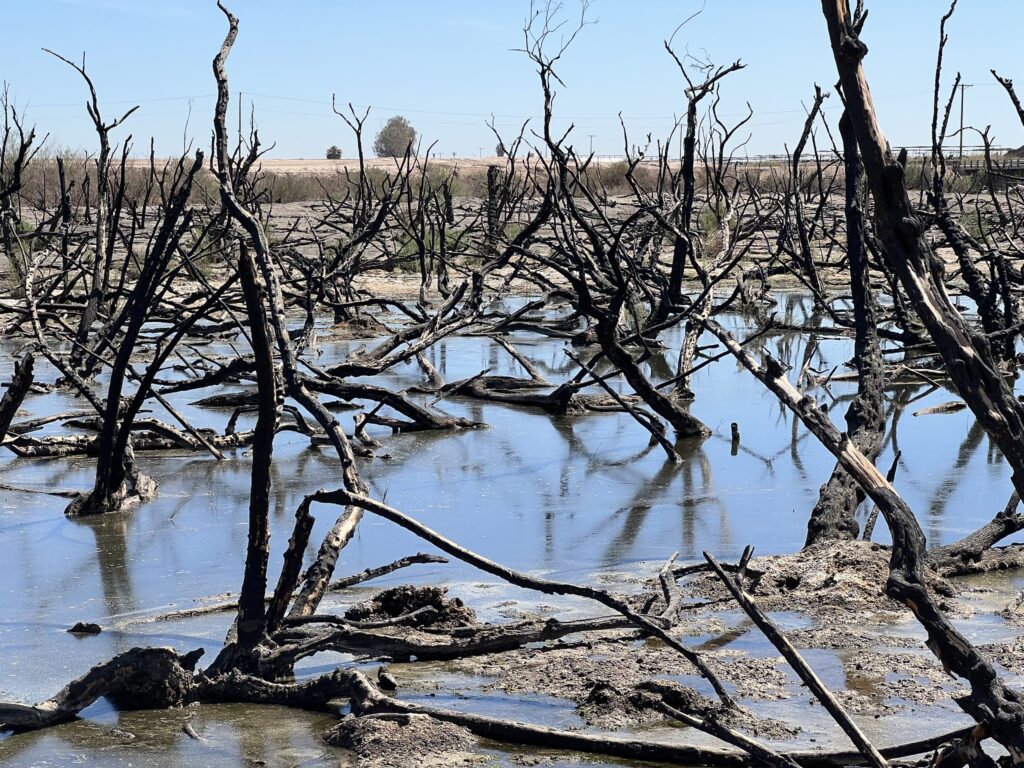
In 2022, River Partners secured a grant from the California Department of Fish and Wildlife to revive approximately 1,500 acres of cottonwood, mesquite, and willow forests at the Finney-Ramer Wildlife Unit along the Alamo River. With proven restoration techniques we used on the Colorado River to eradicate devastating tamarisk infestations and replace them with native forests, River Partners is expanding our success to the choked and polluted Alamo River.
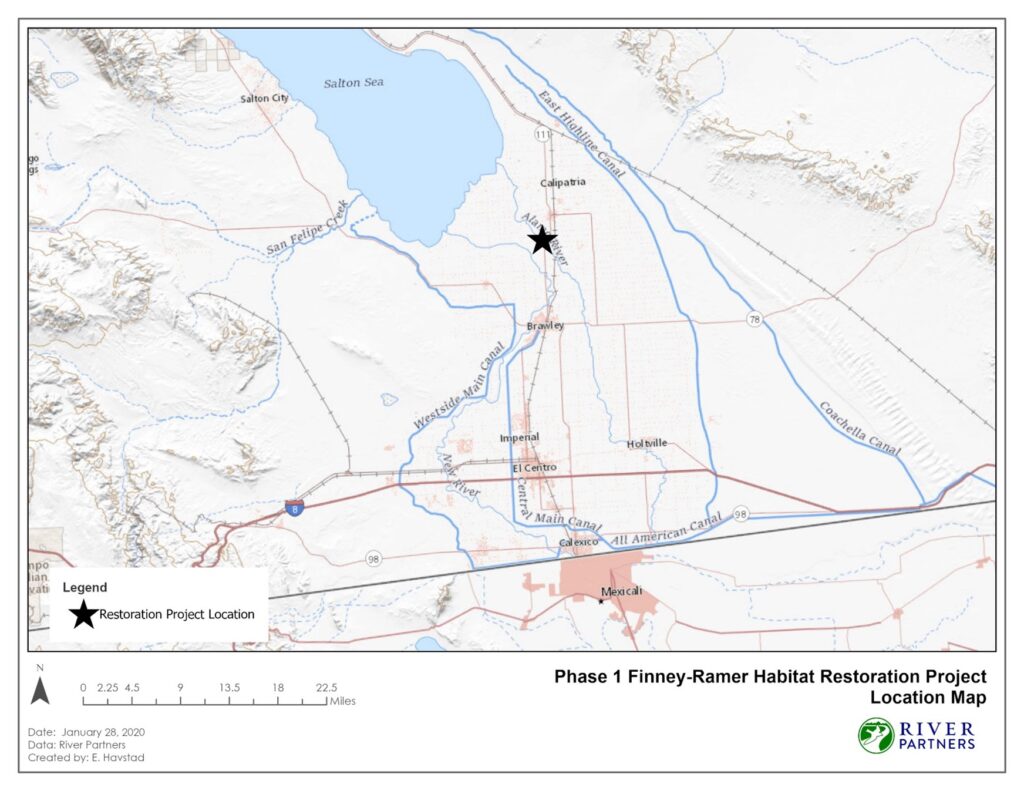
Nearby, we’re working with the City of Holtville to expand and restore 3 miles of riverside trails along the Alamo, aimed at fostering ecological health and community well-being, who lack many opportunities for outdoor recreation. These much-needed restoration efforts upstream on the Alamo River complement ongoing wetland restoration led by public agencies at the edge of the Salton Sea.
“It’s a birder’s dream, or it once was,” said River Partners Restoration Ecologist Emma Havstad. “Our long-term restoration goal is to not just boost ecology and wildlife, but also make sure community members have recreational access. This is one of only a handful of natural areas in the whole region people can get out and enjoy nature.”
A Brief History of the Salton Sea
Although the Salton Sea is California’s largest lake at nearly 312 square miles, the lakebed where it currently sits was once home to an even larger ancient lake known as Lake Cahuilla. When it was full, it was about six times larger, and extended into Mexico from the delta of the Colorado River. In wet years, it overflowed into the Gulf of California.
Lake Cahuilla naturally filled and drained for millennia, supporting thriving indigenous communities of Cahuilla and Kumeyaay people who fished and hunted on its shores. Mussels were abundant in the shallow water, and migratory birds including ducks, geese, and shorebirds flocked to this critical stop on the Pacific Flyway.
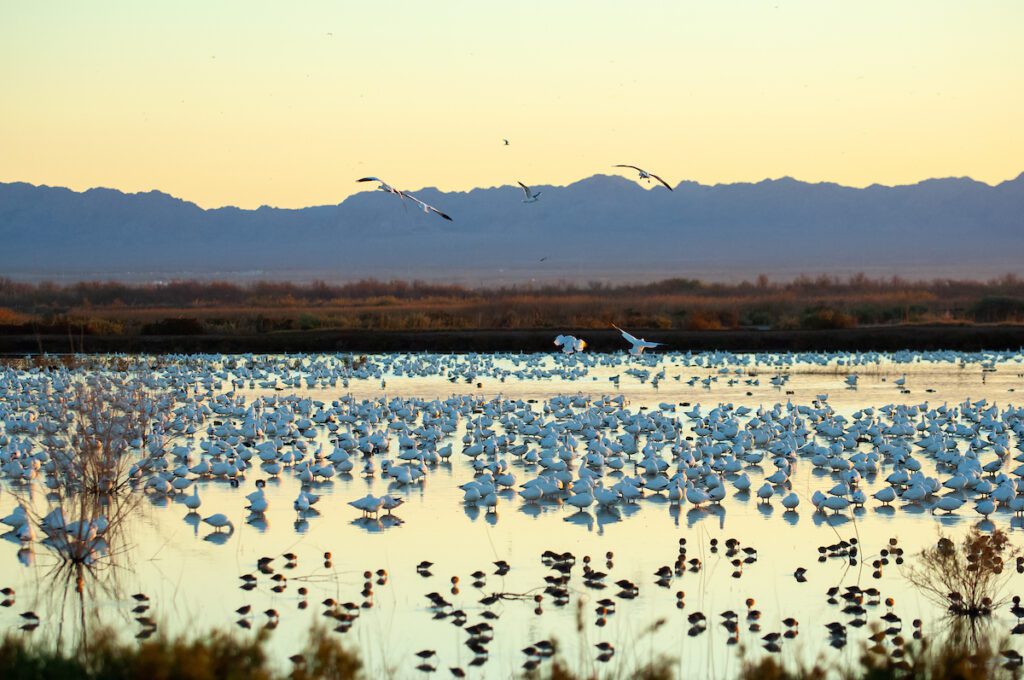
In 1905, the modern-day Salton Sea was created when irrigation canals from the Colorado River breached and spilled millions of gallons of water into the Salton Basin, mimicking what once naturally occurred before dams, levees and pumps reduced the lower Colorado River into a narrow, muddy channel.
This sudden abundance of water initiated an agricultural boom in the southeast corner of California. However, without a robust natural watershed to periodically refill and flush the Salton Basin, salty soils, high evaporation rates, and constant agricultural run-off threatened collapse of the entire Salton Sea ecosystem. By the 1990s, a staggering 97% of fish populations died off due to high salinity and large algal blooms caused by fertilizers. In 1996, a bacterial neurotoxin in the water killed about 15,000 birds in a single event. The stench reached all the way to the city of Los Angeles.
The shrinking, toxic, land-locked sea has been called one of California’s biggest crises. As the shallow lake evaporates, toxic dust blows into local communities, contributing to sky-high rates of respiratory disease. Children visit the emergency room for respiratory issues in Imperial County at twice the rate of the rest of California.
Restoration Offers a Glimmer of Hope
Despite the dire situation, not all is lost. “Habitat restoration along the Alamo River offers a glimmer of hope for our riverways and for communities,” shared Celeste Cantu, Chair of the San Diego Regional Water Quality Control Board.
Earlier this year, River Partners broke ground on approximately 45 acres of restoration at the Finney-Ramer unit of the Imperial Wildlife Area, about 10 miles from the outlet to the Salton Sea.
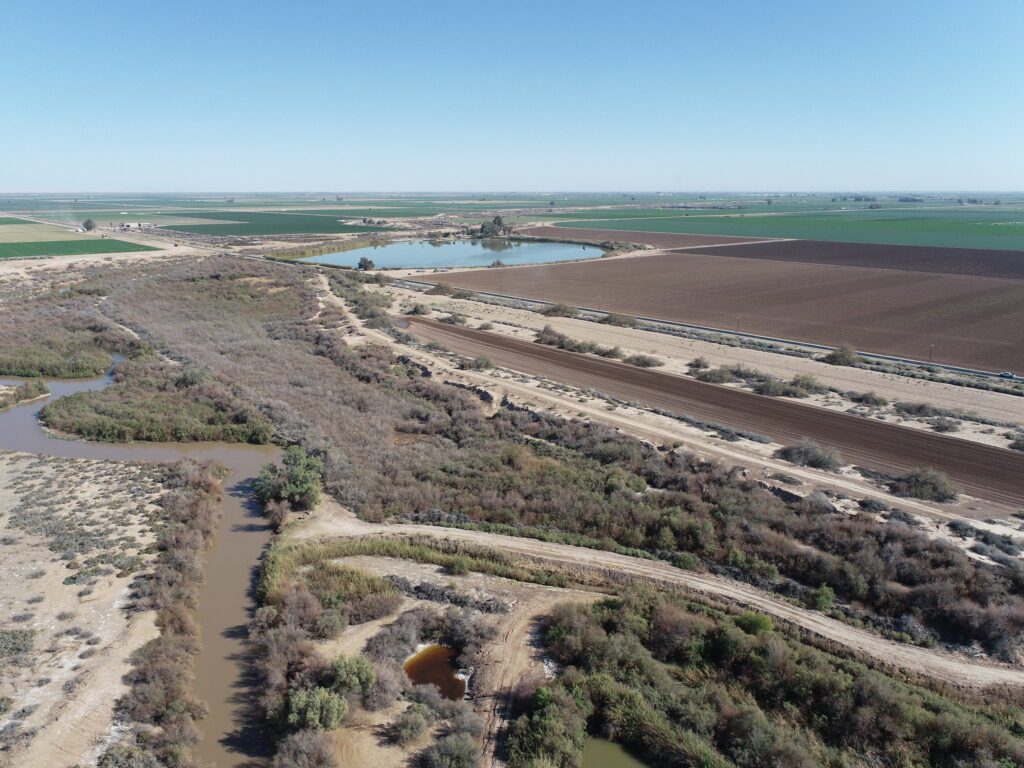
Over the next three years, we’ll remove about 45 acres of invasive, water guzzling, and highly flammable tamarisk. Then, we’ll plant native habitat, including honey mesquite. Mesquite is a great pollinator plant, which will in turn attract birds such as the endangered southwestern willow flycatcher, vermilion flycatchers, yellow-billed woodpeckers, and elf owls. Foxes, coyotes, rabbits, cotton rats, and ground squirrels also rely on mesquite fruit as a source of food.
In total, River Partners will restore about 1,500 acres of native habitat in the next decade.
“When we put together the restoration plan, we included the longest list of focal species we’ve ever written,” said River Partners Restoration Ecologist Emma Havstad. “It’s a prized wildlife area we can’t let go of.”
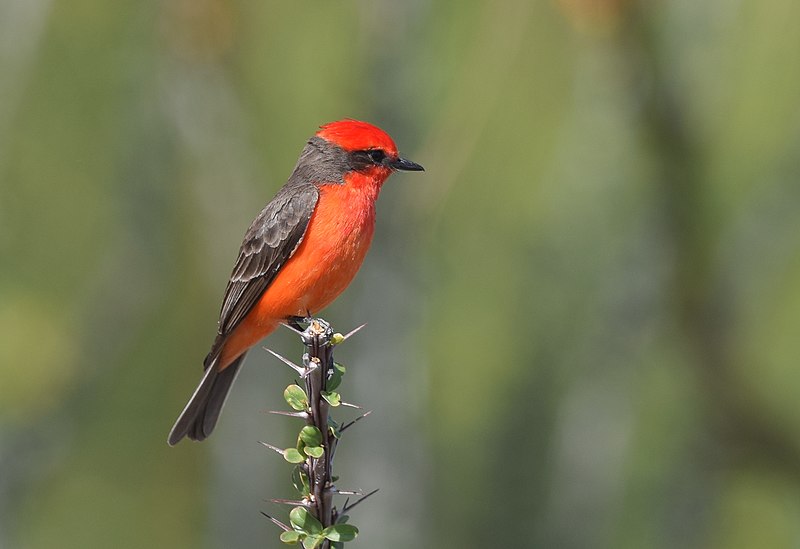
Alongside our partners, we hope this is just the beginning of our work to revive rivers on the brink in the deserts of California to make a difference for critical and often forgotten ecosystems and communities.
“This reach of the Alamo River used to be a mecca for wildlife, and I have wanted to restore it for almost 20 years,” says Scott Sewell, California Department of Fish and Wildlife Senior Fish Wildlife and Habitat Supervisor. “I needed someone who shared my vision and could do the heavy lifting. Working with River Partners, we have set our sights on making this an incredible area for wildlife and people to enjoy again.”
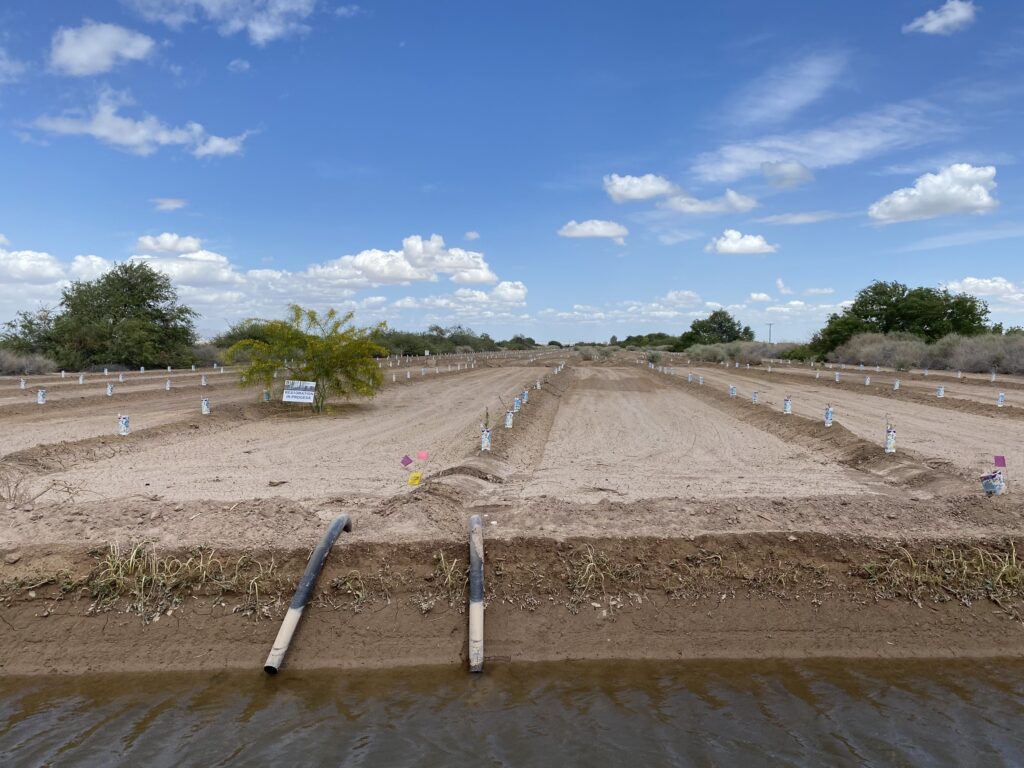
Perfectly positioned on the Pacific Flyway, we hope that restoring the Alamo River will create habitat that once again provides a desert oasis for migratory birds.
Imperial County’s First Native Plant Nursery
“We’re thrilled with the response to our work,” says River Partners Restoration Ecologist Jon Green. “We’ve had locals stop by to ask what we’re doing, and if they can help.”
Yet, as restoration got underway, River Partners learned that sourcing native plants was a real challenge in that part of the state. “We couldn’t find any native plant nurseries in Imperial County. They didn’t exist,” says Green.
Eventually, we sourced plants from the nearest available nurseries in San Diego County and even Arizona. For months, this appeared to be the best option. However, importing plants across county and state borders comes with additional challenges of importing, customs, and increased shipping costs.
By a small miracle, River Partners Field Manager Jorge Robles knew the right people with the right background and interest in starting a nursery business in Imperial County. “Natives of the Desert,” the Imperial County’s inaugural native plant nursery, was born in March 2023. River Partners is their founding customer.
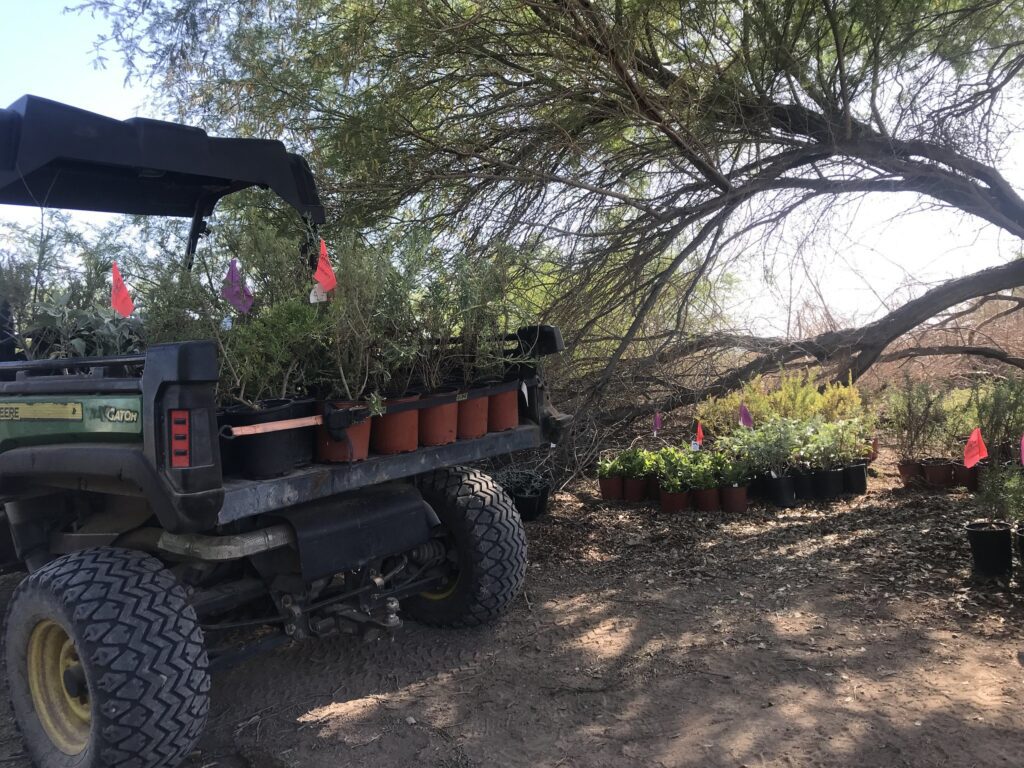
“We will support them if they can grow the plants,” says Green. So far, River Partners has dropped off wild-collected seed to be grown out at their nursery. “The plants they grow will be hyper-local. They’ll be adapted to tolerate the harsh climate out here. That’s as good as it gets.”
This partnership illustrates that restoration isn’t merely about ecological outcomes; it’s also about fostering local communities and economies.
“The work we do generates work for other people, and we become mutually supported,” says Green. “If you think about that ecologically, that is how nature works. River Partners organizationally is functioning like an ecosystem.”
Funders and supporters of this project include the California Department of Fish and Wildlife, California Environmental Protection Agency, Imperial Irrigation District, and Farmworkers Institute for Education and Leadership Development.


